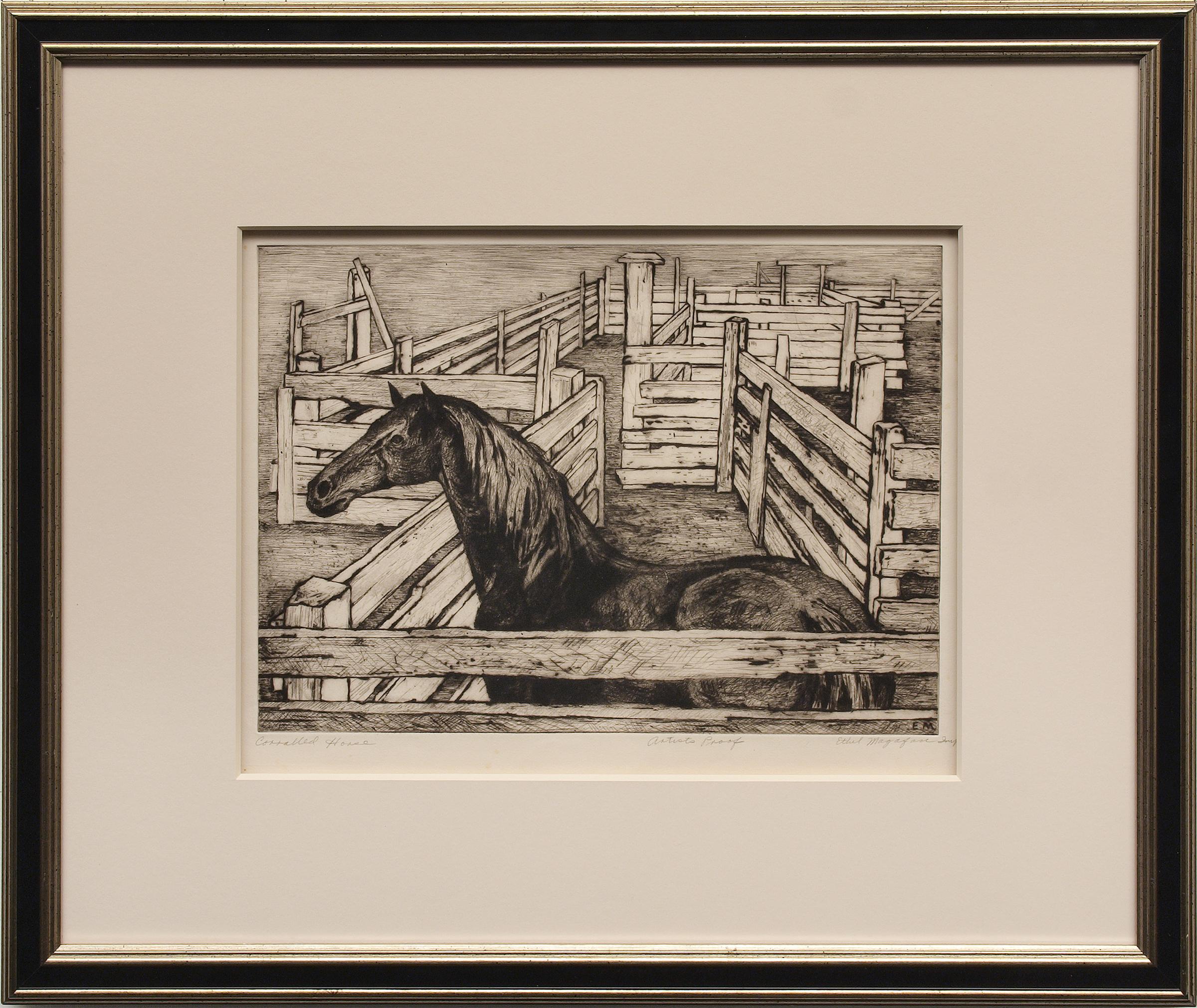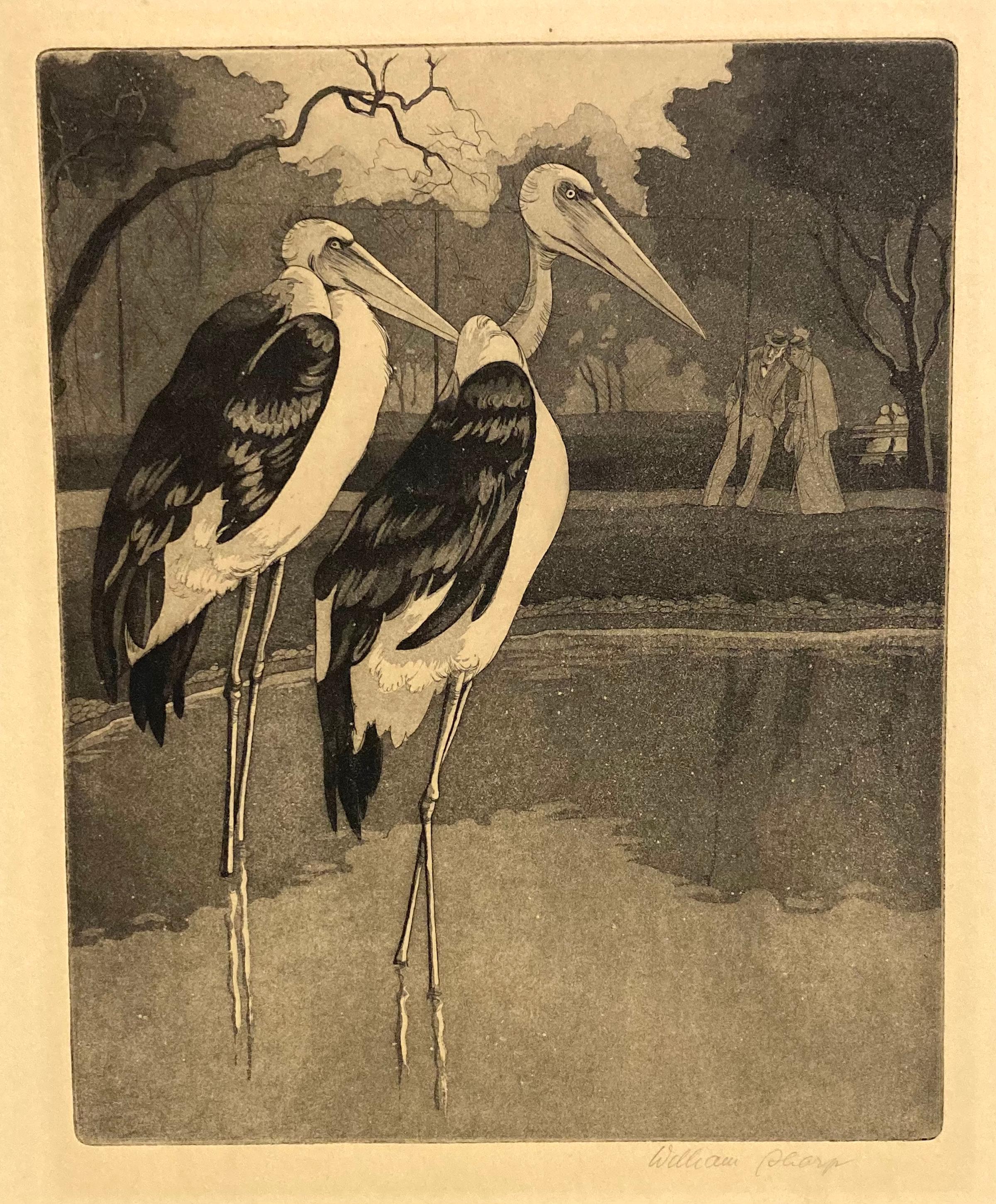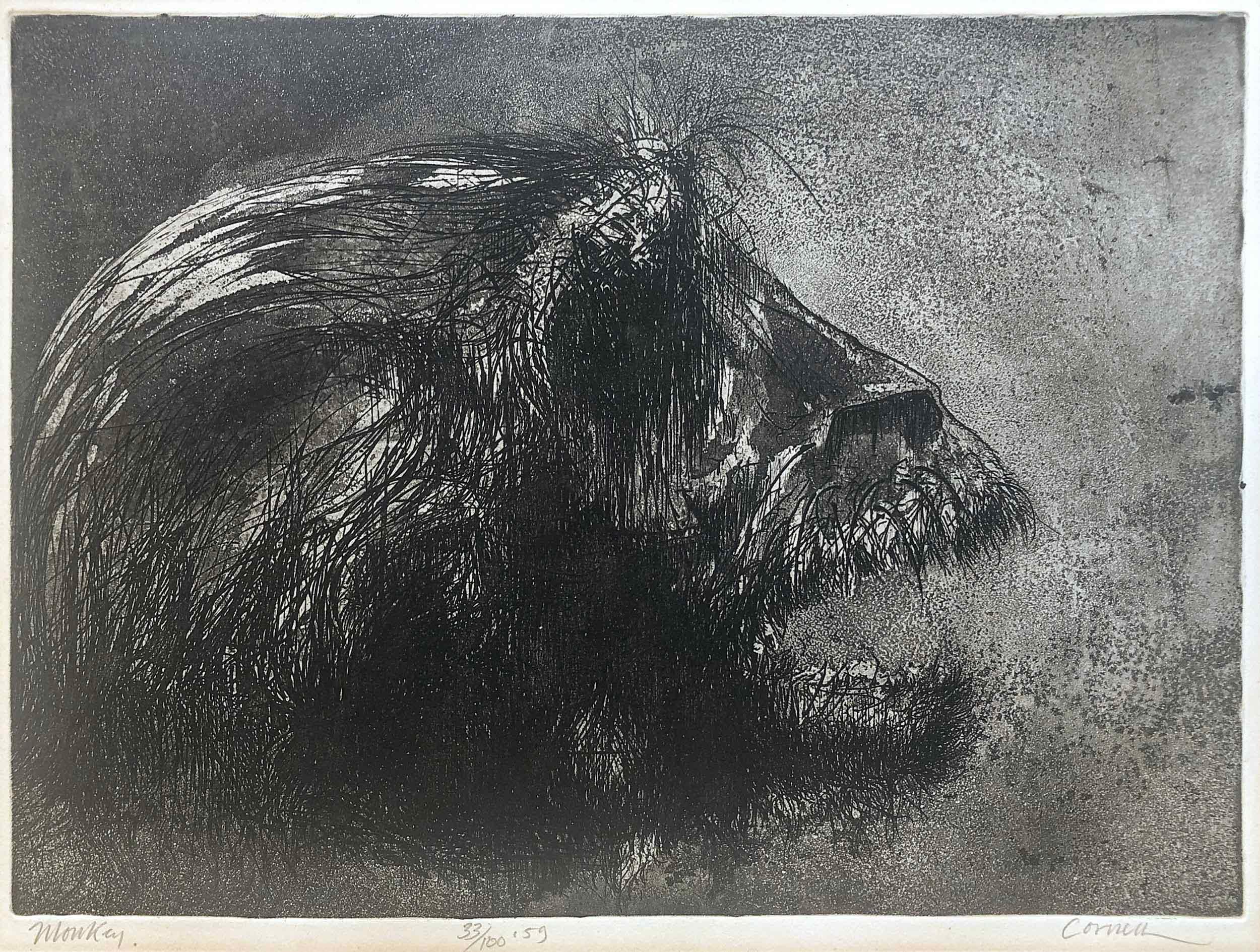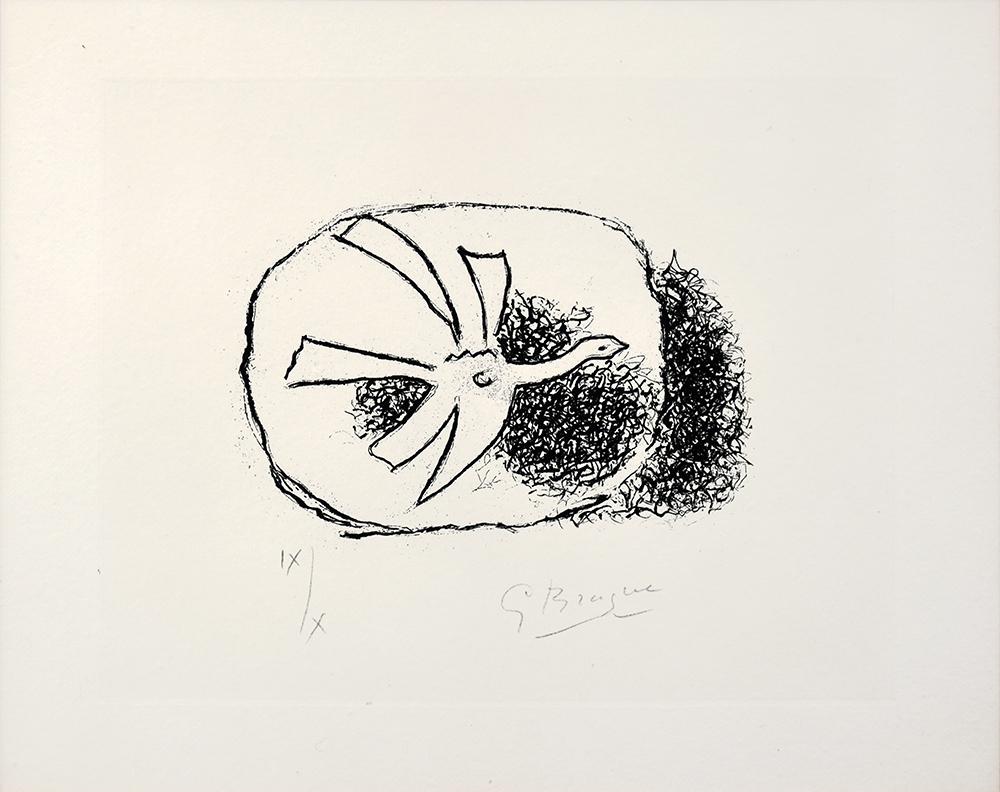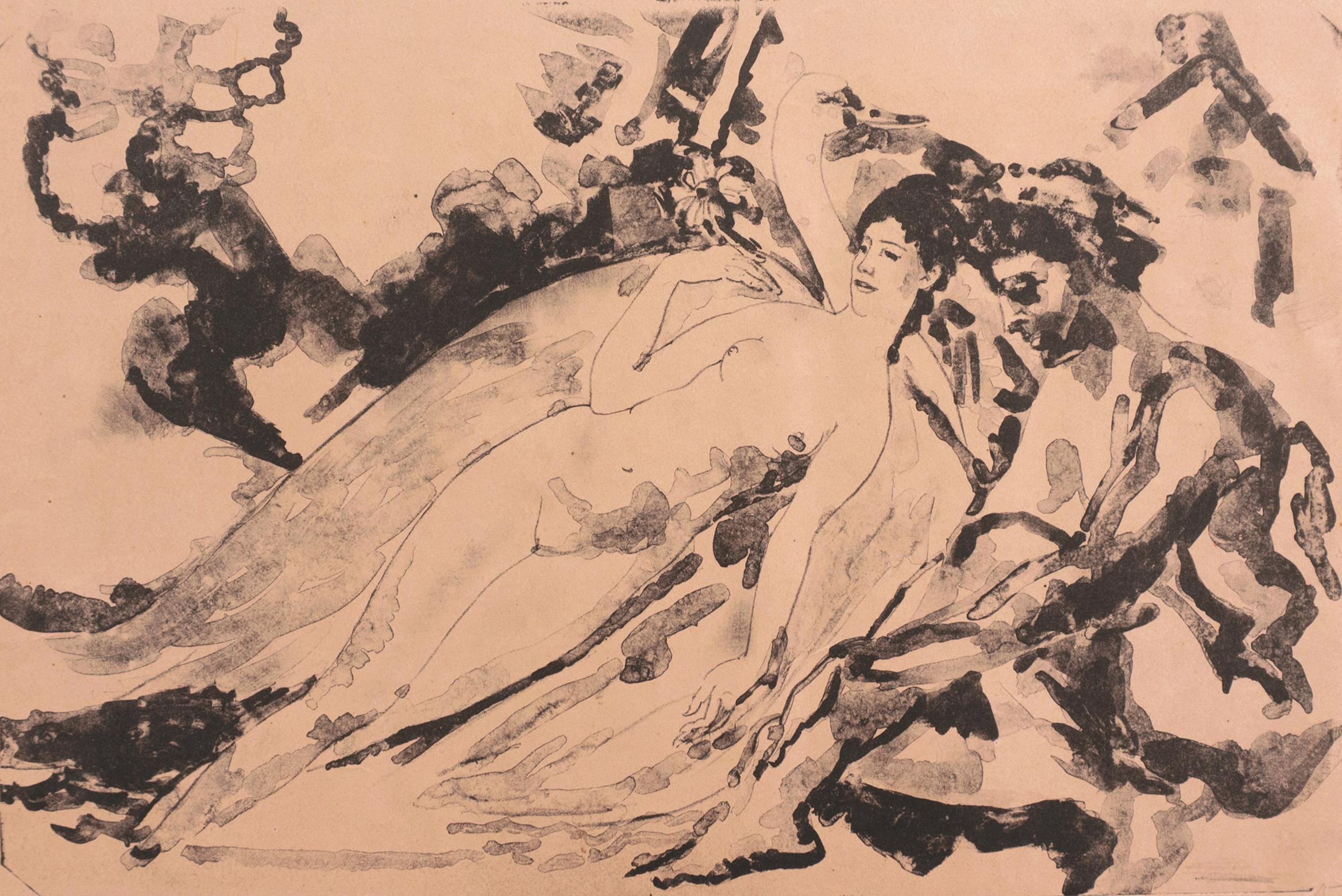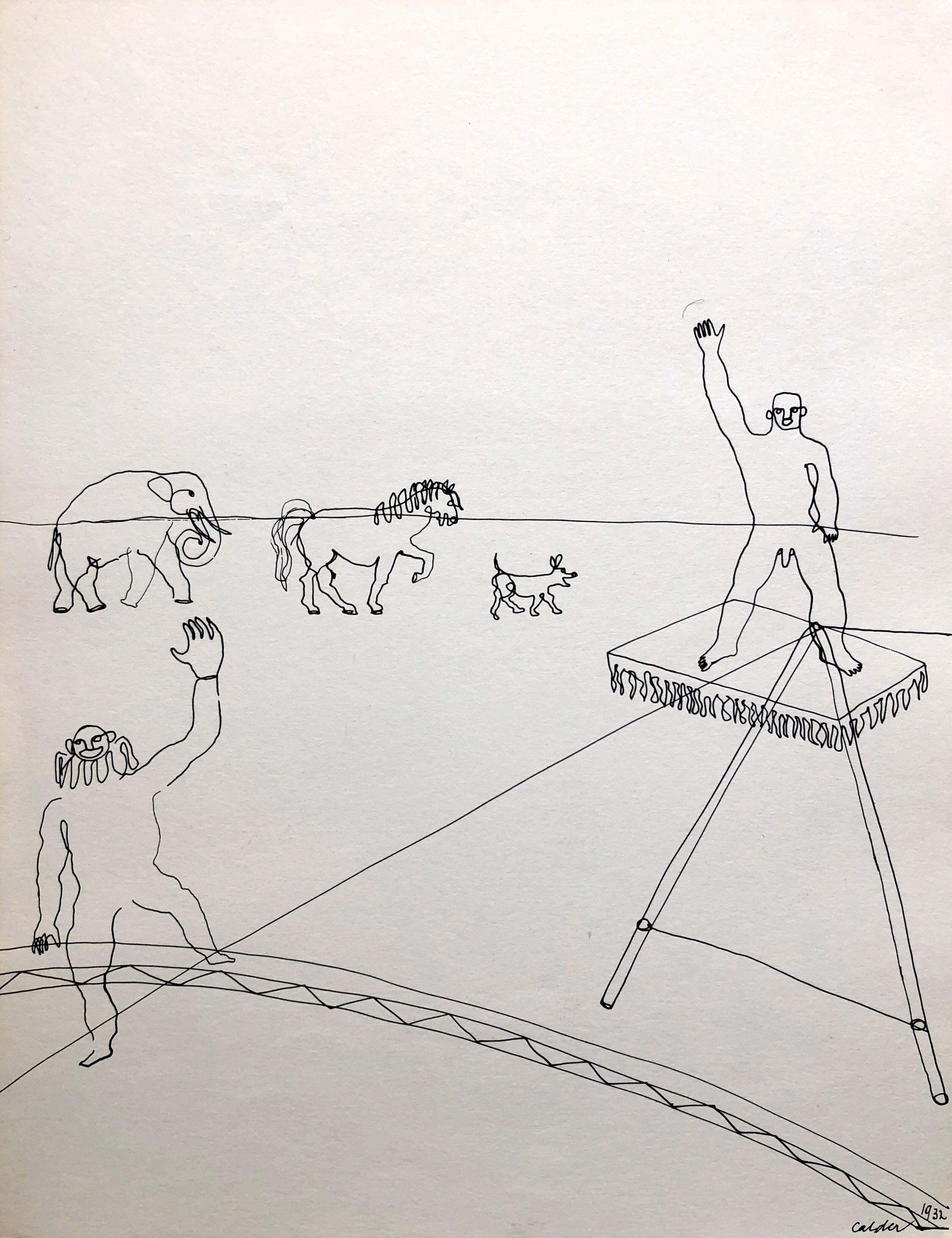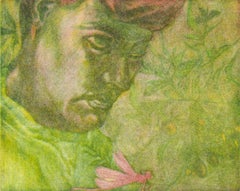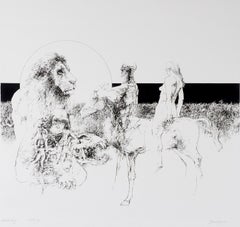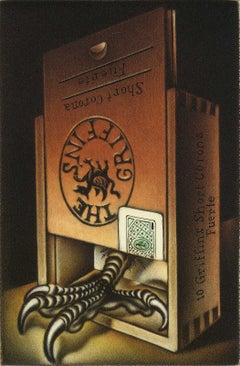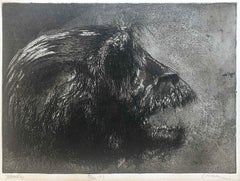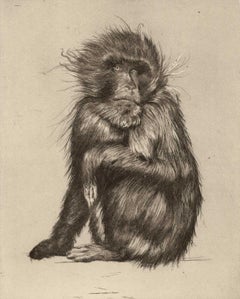
Goodbye to Monkeys I by Hugo Wilson (Monkey as Mirror of Man)
View Similar Items
Want more images or videos?
Request additional images or videos from the seller
1 of 5
Hugo WilsonGoodbye to Monkeys I by Hugo Wilson (Monkey as Mirror of Man)2017
2017
About the Item
- Creator:Hugo Wilson (1982, British)
- Creation Year:2017
- Dimensions:Height: 11.75 in (29.85 cm)Width: 9.63 in (24.47 cm)
- Medium:
- Movement & Style:
- Period:
- Condition:
- Gallery Location:New Orleans, LA
- Reference Number:1stDibs: LU84137303332
About the Seller
4.9
Gold Seller
These expertly vetted sellers are highly rated and consistently exceed customer expectations.
Established in 1988
1stDibs seller since 2018
752 sales on 1stDibs
Typical response time: 3 hours
Associations
International Fine Print Dealers Association
More From This SellerView All
- Red Damsel (Human looks at small Tinker Bell like figure)By Lois WardLocated in New Orleans, LALois Ward's "Red Damsel" is a color mezzotint created in 1994 in a very small edition of just 10. This impression is #2 of 10. A young human figure in green gazes down on a Tinker B...Category
1990s American Modern Figurative Prints
MaterialsMezzotint
- To the SeaBy Jack Coughlin 1Located in New Orleans, LABorn in Greenwich, Connecticut, Jack Coughlin studied at the Rhode Island School of Design in Providence and the Art Students League of New York. He is b...Category
1960s American Modern Animal Prints
MaterialsAquatint
$88 Sale Price56% Off - Talon Show (small things may contain grave danger. A single lie can grow + grow)By Carol WaxLocated in New Orleans, LATalon Show is a color intaglio created in an edition of 30. This impression is #2 of 30. Carol Wax originally trained to be a classical musician at the Manhattan School of Music but...Category
21st Century and Contemporary American Modern Still-life Prints
MaterialsMezzotint, Etching, Aquatint
- Sanctuary (St. Anthony's Garden at rear of St. Louis Cathedral on Royal Street)By Frederick MershimerLocated in New Orleans, LAThis French Quarter garden is a serene haven with a lighted statue of Christ that exists not very far from the raucous revelry of New Orleans' Bourbon S...Category
1990s American Modern Landscape Prints
MaterialsMezzotint, Aquatint
- Trunk Lines (Interweaved faces, ears and the trunks of elephants form design)By Carol WaxLocated in New Orleans, LACarol Wax describes her circular images as "most often quasi abstract works that refer to ancient islamic designs using the shapes and attributes of animals, in this case the elephan...Category
1980s American Modern Animal Prints
MaterialsMezzotint
- Crushed Beetle / Fragile SeriesBy Lois WardLocated in New Orleans, LALois Ward created a Fragile Series of images including "Crushed Beetle" in 1990 in a very small edition of just 9. This impression is #1 of 9. Ward has always been concerned with t...Category
1990s American Modern Animal Prints
MaterialsMezzotint
$105 Sale Price30% Off
You May Also Like
- William Sharp, Lincoln Park Marabous (probably Chicago)By William SharpLocated in New York, NYWilliam Sharp, largely known as a court reporter, was based in New York City. Probably this scene of Lincoln Park Marabous is Chicago. There are several ...Category
Mid-20th Century American Modern Animal Prints
MaterialsEtching
- Corralled Horse (Artists Proof), 1940s Framed American Modernist Horse EtchingBy Ethel MagafanLocated in Denver, CO"Corralled Horse", is an etching on paper by western artist Ethel Magafan (1916-1993) of a single dark horse standing outside in a wooden fenced corral. Presented in a custom frame, outer dimensions measure 19 x 23 inches. Image size is 10 x 14 inches. This is marked as an Artist Proof Piece is in very good condition - please contact us for a detailed condition report. Provenance: Estate of Artist, Ethel Magafan Expedited and international shipping is available - please contact us for a quote. About the Artist: Ethel Magafan Born 1916 Died 1993 The daughter of a Greek immigrant father and a Polish immigrant mother who met and married in Chicago, Ethel Magafan, her identical twin sister Jenne and their elder sister Sophie grew up in Colorado to which their father relocated the family in 1919. They initially lived in Colorado Springs where he worked as a waiter at the Antlers Hotel before moving to Denver in 1930 to be head waiter at the Albany Hotel. Two years later during the Great Depression Ethel and Jenne experienced at sixteen the tragic loss of their father who had encouraged their artistic aspirations. He was proud when Ethel, a student at Morey Junior High School, won top prizes in student poster contests sponsored by the Denver Chamber of Commerce and the Denver Post. At East High School in Denver she and Jenne contributed their art talents to the school’s and by their senior year were co-art editors of the Angelus, the 1933 yearbook. At East they studied art with Helen Perry, herself a student of André Lhote in Paris and the Art Institute of Chicago. Her decision to abandon an arts career to teach high school students served as an important example to Ethel and Jenne, who early on had decided to become artists. In a city-wide Denver competition for high school art students Ethel won an eighteenweek art course in 1932-33 to study at the Kirkland School of Art which artist Vance Kirkland had recently established in the Mile High City. Perry encouraged the Magafan twins’ talent, exposing them to the work of Matisse, Picasso and Cézanne and introducing them to local artists and architects like Frank Mechau and Jacques Benedict whom she invited to speak in her high school art classes. She paid the modest tuition for Ethel and Jenne to study composition, color, mural designing and painting at Mechau’s School of Art in downtown Denver in 1933-34. In the summer of 1934 and for a time in 1936 they apprenticed with him at his studio in Redstone, Colorado. When they returned to Denver in 1934 with no family breadwinner to support them, their mother insisted that they have real jobs so they worked as fashion artists in a Denver department store. When Jenne won the Carter Memorial Art Scholarship ($90.00) two years later, she shared it with Ethel so that both of them could enroll in the Broadmoor Art Academy (now the Colorado Springs Fine Arts Center) where they studied with Mechau. When the scholarship money ran out after two months, he hired them as his assistants. Along with Edward (Eduardo) Chavez and Polly Duncan, they helped him with his federal government mural commissions. At the Fine Arts Center Ethel also studied with Boardman Robinson and Peppino Mangravite, who hired her and Jenne in 1939 to assist him in his New York studio with two murals commissioned for the post office in Atlantic City, New Jersey. Like their Denver high school art teacher, Robinson also stressed the need to draw from nature in order to "feel" the mountains, which later become the dominant subject matter of Ethel’s mature work after World War II. Mechau trained her and her sister in the complex process of mural painting while they studied at the Colorado Springs Fine Arts Center, teaching them the compositional techniques of the European Renaissance masters. This also involved library research for historical accuracy, small scale drawing, and Page 2 of 4 the hand-making of paints and other supplies. Ethel recalled that their teacher "was a lovely man but he was a hard worker. He drove us. There was no fooling around." Her apprenticeship with Mechau prepared her to win four national government competitions, beginning at age twenty-two, for large murals in U.S. post offices: Threshing – Auburn, Nebraska (1938), Cotton Pickers – Wynne, Arkansas (1940), Prairie Fire – Madill, Oklahoma (1940), and The Horse Corral – South Denver, Colorado (1942). In preparation for their commissions Ethel and her sister made trips around the country to pending mural locations, driving their beat-up station wagon, dressed in jeans and cowboy boots with art supplies and dogs in tow. She and Jenne combined their talents in the mural, Mountains in Snow, for the Department of Health and Human Services Building in Washington, DC (1942). A year later Ethel executed her own mural, Andrew Jackson at the Battle of New Orleans, January 8, 1814, for the Recorder of Deeds Building, also in Washington, DC. Her first mural commission, Indian Dance, done in 1937 under the Treasury Department Art Project for the Senate Chamber in the United States Capitol, has since disappeared. Ethel and her sister lived and worked in Colorado Springs until 1941 when their residence became determined by the wartime military postings of Jenne’s husband, Edward Chavez. They moved briefly to Los Angeles (1941-42) and then to Cheyenne, Wyoming, while he was stationed at Fort Warren, and then back to Los Angeles for two years in 1943. While in California, Ethel and Jenne executed a floral mural for the Sun Room of the Beverly Hills Hotel and also painted scenes of the ocean which they exhibited at the Raymond and Raymond Galleries in Beverly Hills. While in Los Angeles they met novelist Irving Stone, author of Lust for Life, who told them about Woodstock, as did artists Arnold Blanch and Doris Lee (both of whom previously taught at the Colorado Springs Fine Arts Center school. In summer of 1945 Ethel, her sister and brother-in-law drove their station wagon across the country to Woodstock which became their permanent home. A year later Ethel married artist and musician, Bruce Currie, whom she met in Woodstock. In 1948 with the help of the GI Bill they purchased an old barn there that also housed their individual studios located at opposite ends of the house. The spatial arrangement mirrors the advice she gave her daughter, Jenne, also an artist: "Make sure you end up with a man who respects your work…The worst thing for an artist is to be in competition with her husband." In 1951 Ethel won a Fulbright Scholarship to Greece where she and her husband spent 1951-52. In addition to extensively traveling, sketching and painting the local landscape, she reconnected with her late father’s family in the area of Messinia on the Peloponnese peninsula in southern Greece. At the same time, her sister Jenne accompanied Chavez on his Fulbright Scholarship to Italy where they spent a productive year painting and visiting museums. Shortly after returning home, Jenne’s career was cut tragically short when she died of a cerebral hemorrhage at age thirty-six. It deeply affected Ethel whose own work took on a somber quality for several years conveyed by a darkish palette, as seen in her tempera painting, Aftermath (circa 1952). In the 1940s Ethel and her sister successfully made the important transition from government patronage to careers as independent artists. Ethel became distinguished for her modernist landscapes. Even though Ethel became a permanent Woodstock resident after World War II, from her childhood in Colorado she retained her love of the Rocky Mountains, her "earliest source of my lifelong passion for mountain landscape." She and her husband began returning to Colorado for annual summer camping trips on which they later were joined by their daughter, Jenne. Ethel did many sketches and drawings of places she found which had special meaning for her. They enabled her to recall their vital qualities which she later painted in her Woodstock studio, conveying her feeling about places remembered. She also produced a number of watercolors and prints of the Colorado landscape that constituted a departure from the American Scene style of her earlier paintings. Her postwar creative output collectively belongs to the category of landscape abstractionists as described by author Sheldon Cheney, although to a greater or lesser degree her work references Colorado’s mountainous terrain. She introduced a palette of stronger pastels in her paintings such as two temperas, Evening Mountains from the 1950s and Springtime in the Mountains from the early 1960s. In 1968 she was elected an Academician by the National Academy of Design in New York. Two years later, based on results of her many summer trips to Colorado, the U.S. Department of the Interior invited her to make on-the-spot sketches of the western United States, helping to document the water resources development and conservation efforts by the Department of the Interior. Her sketches were exhibited at the National Gallery in Washington, DC, and then sent on a national tour by the Smithsonian Institution. Similarly, her previous work as a muralist earned her a final commission at age sixty-three for a 12 by 20 foot Civil War image, Grant in the Wilderness, installed in 1979 in the Chancellorsville Visitors Center at the Fredericksburg National Military Park in Virginia. In the 1970s, too, she taught as Artist-in-Residence at Syracuse University and at the University of Georgia in Athens. Her many awards include, among others, the Stacey Scholarship (1947); Tiffany Fellowship (1949); Fulbright Grant (1951-52, in Greece with her husband); Tiffany Fellowship (1949); Benjamin Altman Landscape Prize, National Academy of Design (1955); Medal of Honor, Audubon, Artists (1962); Henry Ward Granger Fund Purchase Award, National Academy of Design (1964); Childe Hassam Fund Purchase Award, American Academy of Arts and Letters (1970); Silver Medal, Audubon Artists (1983); Champion International Corporation Award, Silvermine Guild, New Canaan, Connecticut (1984); John Taylor Award, Woodstock Artists Association, Woodstock, New York (1985); Harrison Cady...Category
1940s American Modern Figurative Prints
MaterialsEtching, Paper
- Monkey (Edition 33/100 Dated 1959)Located in Sydney, NSWArtist: Thomas Cornell (American 1937-2012) Title: Monkey (Edition 33/100 Dated 1959) Medium: Etching on paper Condition: This work is in good condition, in its original frame. Provenance: Private Collection New York About: Cornell was known for empirical drawings and paintings. His work involved moral content concerning global, social, and environmental justice. He was the Richard E. Steele Artist-in-Residence at Bowdoin College...Category
Mid-20th Century American Modern Animal Prints
MaterialsEtching, Paper
- 'Lida & the Swan', New York Armory Show, Ashcan School, ASL, NYMOMA, AIC, LACMABy Arthur B. DaviesLocated in Santa Cruz, CASigned lower right, 'Arthur B. Davies' for Arthur Bowen Davies (American, 1862-1928) and created circa 1915. An early twentieth-century sugar-lift aquatint showing Zeus in the guise of a swan, reclining and cradling Lida in his wings while King Tyndareus ponders the mutability of human circumstance. Born in Utica, New York, Arthur Davies attended the Chicago Academy of Design from 1879 to 1882. He furthered his studies at the Chicago Art Institute, before moving to New York City in 1885 where he studied at the Art Students League and Gotham Art Students League. In 1893, he made the first of many trips to Europe, visiting Holland, Paris, and London. He became an arch-exponent of Modernism and the central organizing figure of 1913's watershed Armory Show. Davies developed a style that combined visionary Symbolism with elements of Tonalism and Cubism. Who Was Who in American Art describes him as an “…important but enigmatic Modernist whose work was poetic, mysterious, and visionary”. Davies was the recipient of many gold medals and prizes and juried awards and his work is held in the permanent collections of museums nationwide, including New York’s Museum of Modern Art, the Art Institute of Chicago, the Baltimore Museum of Art and the Los Angeles County Museum of Art, among others. Photo of Arthur B Davies circa 1907 in New York City by Gertrude Käsebier courtesy of Library of Congress Prints and Photographs Division Washington, D.C. Reference: Who Was Who in American Art 1564-1975: 400 Years of Artists in America, Peter Hastings Falk, Sound View Press 1999, Vol. 1, p. 835; Artists in California 1786-1940, Third Edition, Edan Milton Hughes: Crocker Art Museum, Sheridan Books 2002, Vol. 1, p. 280; Thieme-Becker Allgemeines Lexikon der Bildenden Künstler von der Antike bis zu Gengenwart, Ulrich Thieme and Felix Becker, Deutscher Taschenbuch Verlag 1992, Vol. 7/8, p. 470; E. Benezit, Dictionnaire des Peintres, Sculpteurs, Dessinateurs, et Graveurs, Jacques Busse, 1999 Nouvelle Édition, Gründ 1911, Vol. 4, p. 293; Davenport’s Art Reference and Price Guide 2009/10 Edition, LTB Gordonsart, Inc. 2008, p. 672; et al. Additional biographical information follows, written by Catherine Southwick and Robert Torchia from the National Gallery of Art Online Editions: Arthur B. Davies’s mystical, mysterious paintings hearken back to 19th-century romanticism, even while Davies aligned himself with American artists advancing the most radical ideals of their day. Davies was born on September 26, 1862, in Utica, New York, the son of English and Welsh parents who had immigrated to the United States in 1856. He first took art lessons as a teenager from a local landscape painter, Dwight Williams...Category
Early 1900s Modern Figurative Prints
MaterialsAquatint, Paper
- Hummingbird - Etching and Aquatint by Marino Marini - 1963By Marino MariniLocated in Roma, ITHummingbird 1963 is an original contemporary artwork realized by Marino Marini. Color etching and aquatint Edition of 100 copies. On the back oh the artwork there is an inscription...Category
1960s Modern Animal Prints
MaterialsEtching, Aquatint
- Horses 1963 - Etching and Aquatint by Marino Marini - 1963By Marino MariniLocated in Roma, ITHorses 1963 is an original contemporary artwork realized by Marino Marini. Color etching and aquatint. Edition of 100 copies. On the back oh the artwork there is an inscription in ...Category
1960s Modern Animal Prints
MaterialsEtching, Aquatint
Recently Viewed
View AllMore Ways To Browse
Modern Pregnant
Pregnant Sculpture
Monkey Train
17th Century Monkey
Parafin Art
Beth Miller
Les Insectes
Michael Watson
Cougar Art
George Rodrigue Signed And Numbered Print
Leroy Neiman Horse Racing
Shells Illustration
Elephant Circus Vintage Art
Antique Plate Cameras
Antique Plate Camera
Diamond Dust Hirst
Warhol Cows
Gould And Richter

